I’m no expert, but I’d argue that even after 60 years on the road it’s not possible to fully appreciate the Mercedes SL ‘Pagoda’ without two essential ingredients.
The first of these is a thin sliver of a handle, chromed and no longer than a Bic ballpoint pen. Easily mislaid, an SL driver loses it at their peril, because this is the detachable locking handle that is applied to the two roof fastenings on the windscreen’s header rail.

The other ingredient required to see what all the fuss is about is, well, sunshine. Admittedly, it’s a little more difficult to manipulate than the roof’s locking lever, but today luck is on our side, the clouds have parted and early April showers subsided, and we have a 280 SL at our disposal.
For that we have Sam Bailey to thank. Bailey is the founder of The SL Shop, near Stratford-upon-Avon, and the W113 280 SL is his. The 280 is the final evolution of the W113, which began as 230 in ’63, grew into the 250 in early ’67 before the 280 wrapped things up on the cusp of ’68.
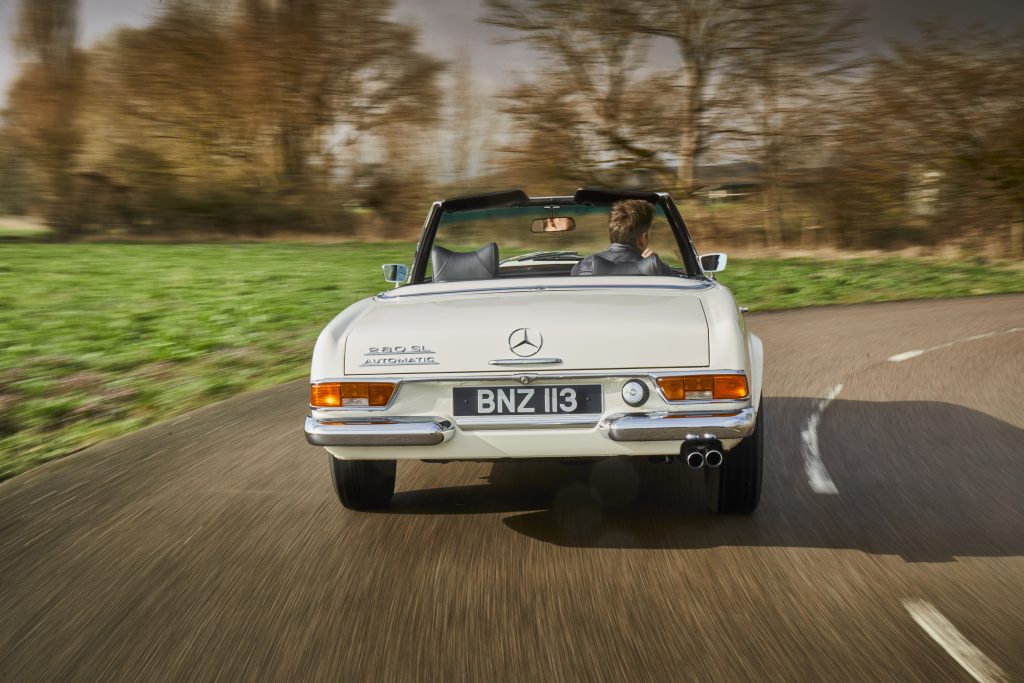
Even among the sea of SLs of every era that surround this temple to all things SL, the Pagoda – which earned its nickname from the shape of the hard top roof – somehow manages to stand out and hold your attention, like looking across a crowded room and meeting the gaze of the partner you instinctively know ‘is the one’.
It’s 60 years since the W113 first drew a crowd, when it made its public debut at the motor show on the shores of Lake Geneva, on 14 March, in 230 SL guise. The car and the thinking behind it steered Mercedes in a new direction, with design and engineering that was a marked step change from the 300 SL and 190 SL that came before, and ultimately it’s the Pagoda that has best defined the concept and positioning of the SL ever since.
Let’s not get bogged down in product positioning, though. Especially when there is a 280 SL ready and waiting for a driver.
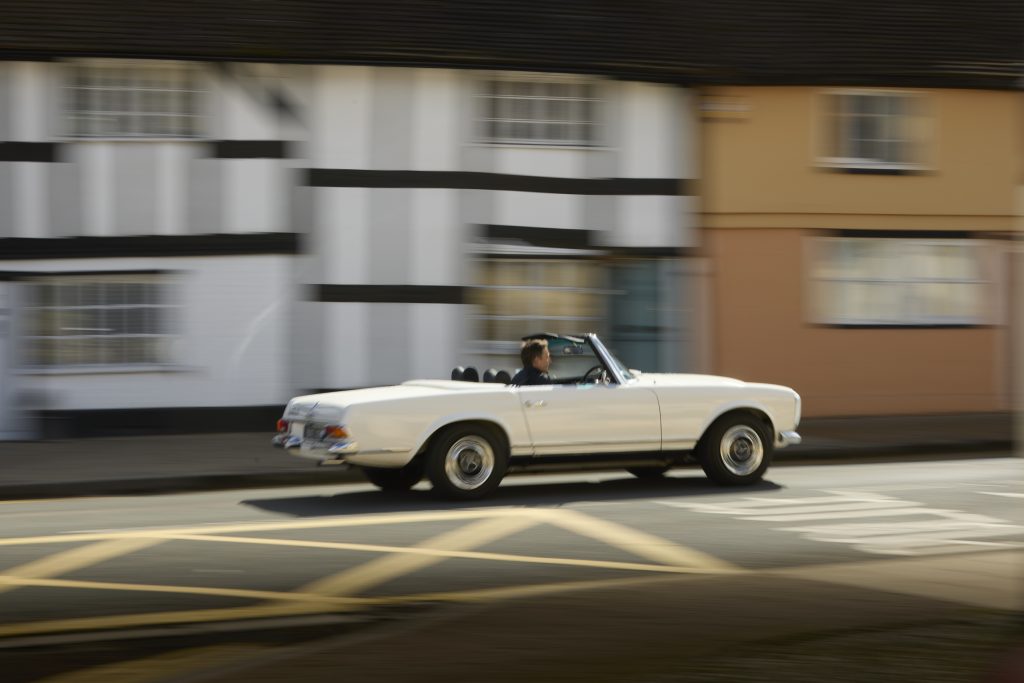
Back to that roof. With the sun shining, and a smattering of photographs captured of the car with the fabric hood raised, it would be rude not to lower it. Once you have been shown the technique to ensure nothing gets trapped or fouled, it’s a straightforward exercise that one person can manage quite easily.
It starts with the aforementioned locking handle, which Bailey keeps in the handy stowage tray between the seats. Latch it in turn to each fastening, twist to release, then get out of the car and walk around to other side, where you reach behind the passenger seat, pull a release lever for the rear of the roof, fold up the back taking care not to crease the plastic window, then pull back and lower the rest of the roof frame, folding carefully as you go. With two people, it’s the work of no more than 30 seconds, but with just a driver there’s a little more toing and froing.
It packs away out of sight beneath the rear deck which fastens securely in place, assuming you followed the procedure correctly and didn’t jam anything along the way.
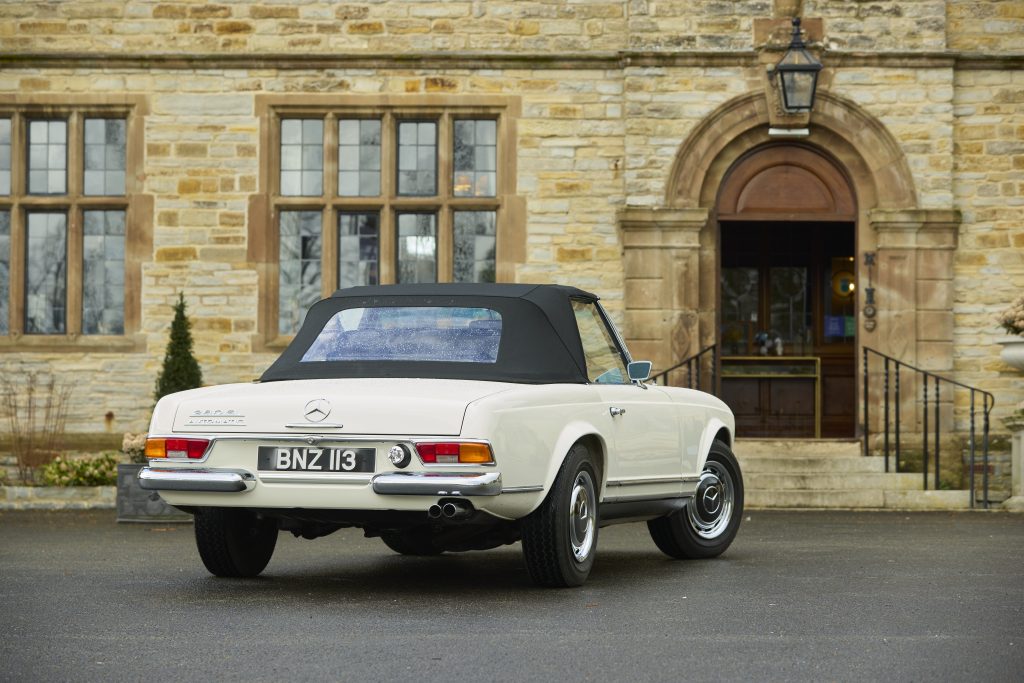
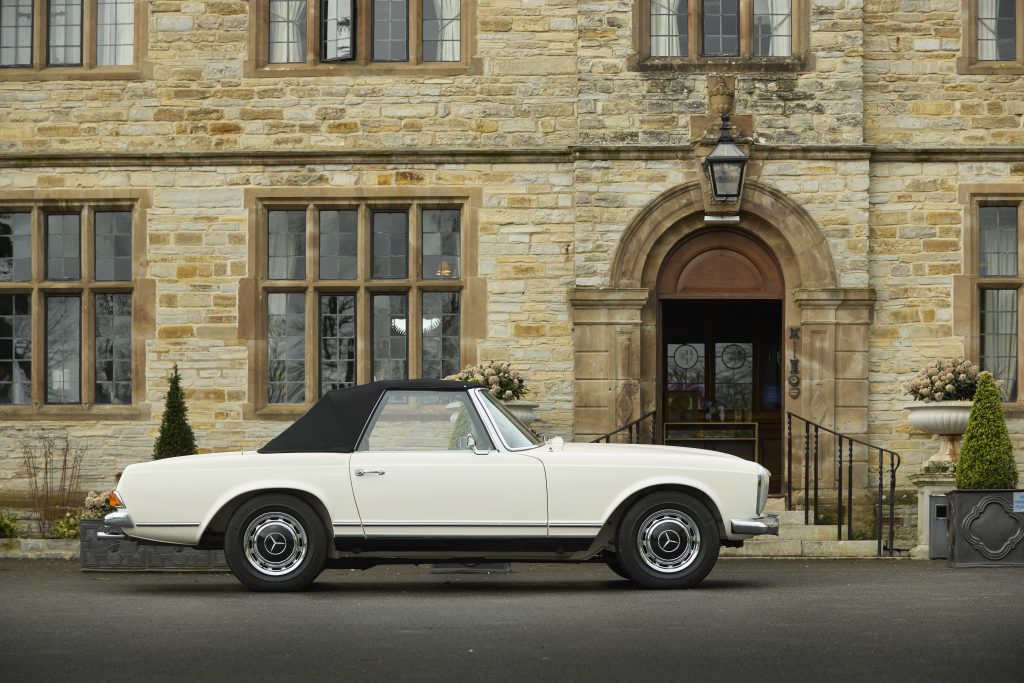
What was already a handsomely proportioned car is somehow elevated to a whole other level of stylishness. The shallow body appears barely any deeper than the vertical headlight clusters, the sharknose with that three-pointed star placed confidently on the grille hints at sporting intent without thrusting and gesticulating like a Jaguar E-type, further helped by Mercedes’ signature bonnet bulge, and the boot lid tapers to a lower point than the rear wings, again adding a subtle hint of dynamism to the mix. It is at once simple yet supremely confident, and of course, with the roof down the world can better peer at whoever is behind the wheel.
For the countless daytrippers and residents of Stratford-upon-Avon, it is likely to be disappointing that there’s ‘a nobody’ at the wheel. People don’t just look at a roofless SL Pagoda, they smile, point, nod or suck in air through their lips – sometimes, somehow, all at once.
In its day, they may well have spotted a famous figure in the driver’s seat. The W113 was very much a plaything of the rich and famous. It cost nearly twice as much as an E-type in Britain, because of import tax, and names associated with the car at the time read like a who’s who of Hollywood and rock ‘n’ roll royalty. John Lennon, Sophia Loren, George Harrison, Stevie Nicks and Stirling Moss all enjoyed their stints at the wheel. Moss went so far as to declare, ‘In all the years I have been driving, I cannot remember ever driving a car that I would have liked to own more.’
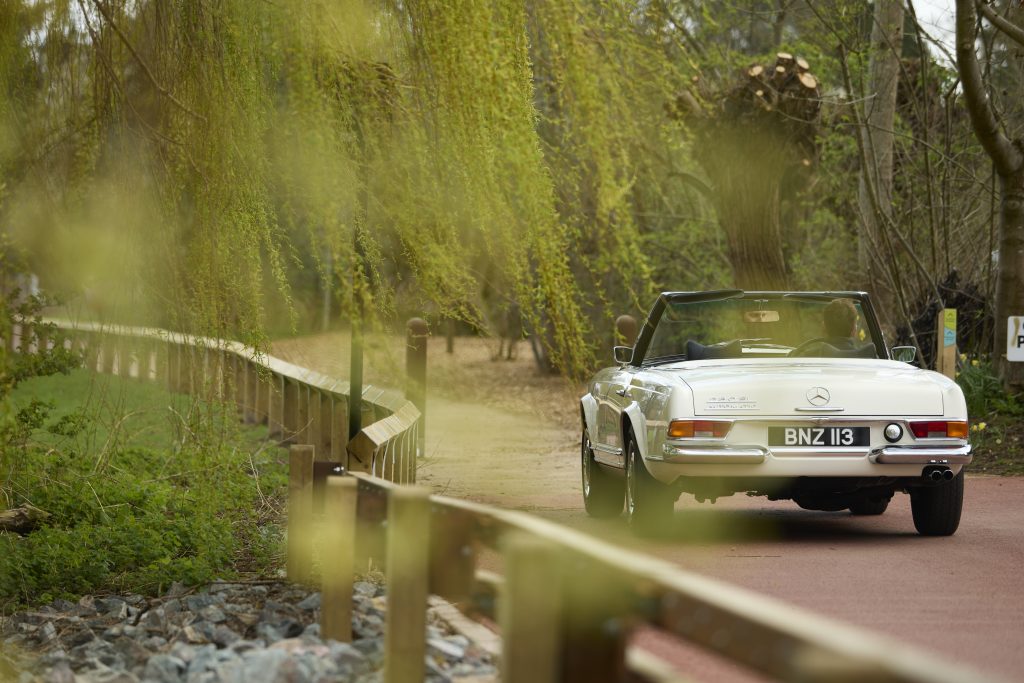
It’s certainly a hugely appealing cabin. Here lies a lesson in ergonomic knowhow, with everything from the driving position to the placement of the switchgear and Becker Grand Prix radio, visibility of the VDO dials to the virtually-uninterrupted view in all directions coming together to put you at ease. Try parking one of these in a tight spot, then attempt the same in an E-type, and you’ll quickly come to be thankful for the Germans’ ever-sensible way of doing things.
And as boring as it may sound, that attention to detail extends to making the car practical. For two, it is spacious, brimming with stowage space and the surprisingly large boot caters for an era when trans-continental travel by car was still the discerning, desirable way to proceed. With the roof down and American Optical sunglasses in place, naturally.
Actually, there’s one more thing you need to do when driving an SL – wind down the windows, and rest your elbow on top of the door. Because while the SL held its own during contemporary independent road tests and endurance rallies, and its name (SL stands for Super-Leicht, Super Light) suggested a car of a deeply sporting bent, there is no finer pleasure to be had than sinking into the thing and just relaxing, feeling – no matter how fleeting the moment – your worries leave you behind in the air tumbling behind the car.
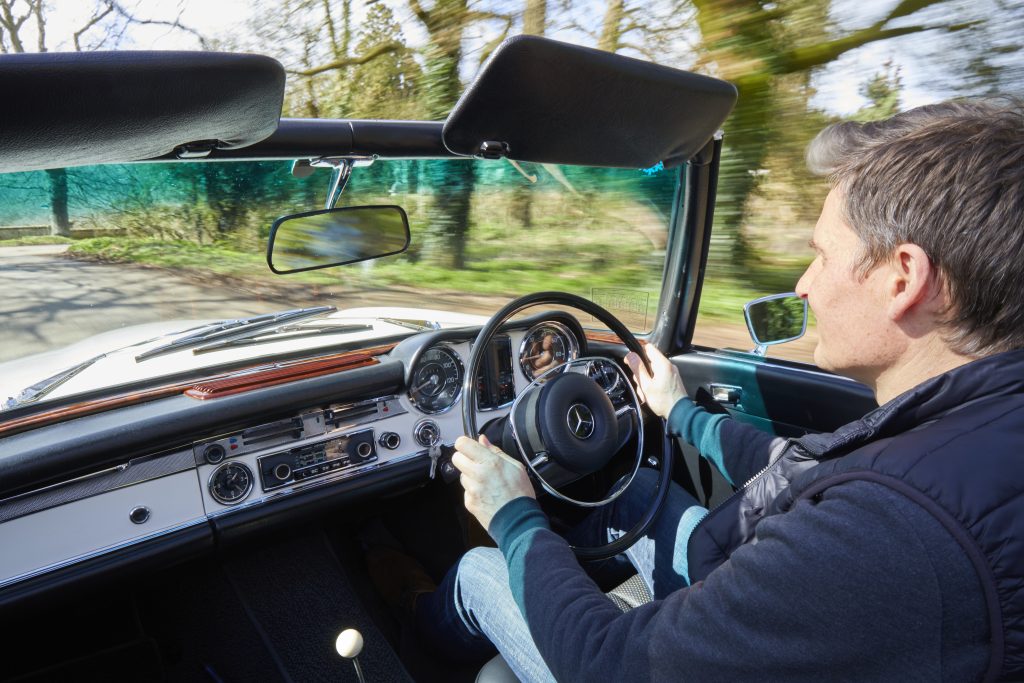
The 2778cc straight six, said to be good for almost 170bhp in its day, has a playful rasp between 1500 and 2000rpm, but generally speaking the four-speed automatic gearbox likes to shift up at 2500rpm. Persuading it to kickdown and hold a gear to experience the snarl at 4000rpm takes some doing, but when the 280 SL does pick up its heels it’s pleasing to find that it takes corners in a flat, surefooted fashion, the open diff ultimately spinning away any excess of power over traction. However, such spirited conduct feels out of place behind the wheel of this most stylish of Mercedes.
Today, this is not only a car, but likely for many an achievement – perhaps a reward for selling your business or a car that has been handed down from one generation to the next, with the simple instruction to enjoy it before repeating the exercise for your own children in years to come. Like many Mercs, it also feels ripe for – whisper it, for fear of upsetting fans of preserving originality – conversion to electric propulsion.
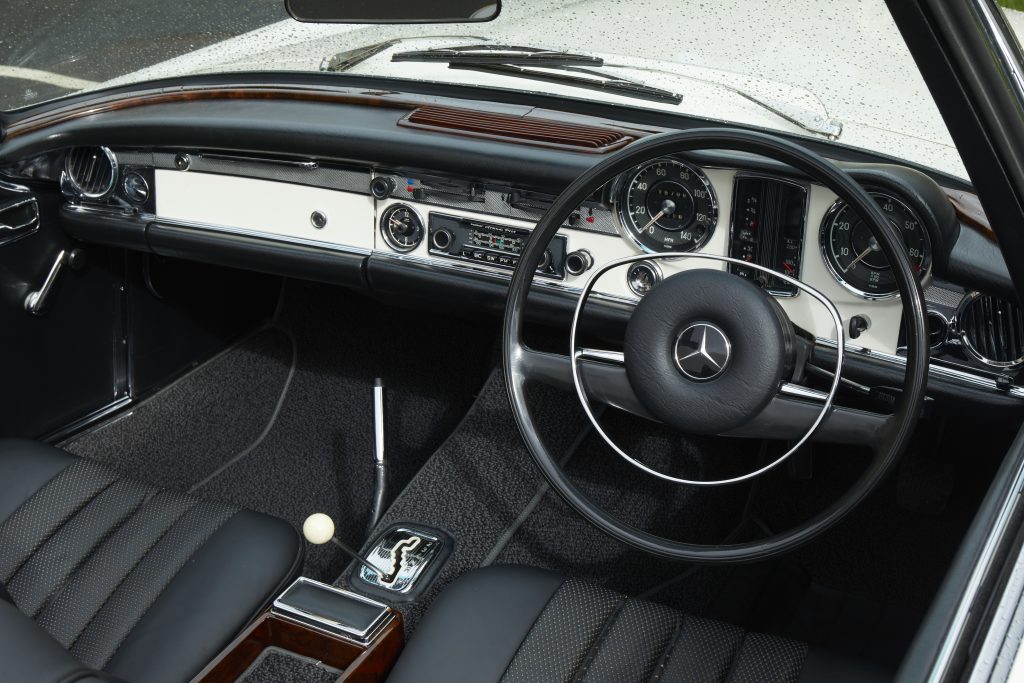
The original 190 SL and 300 SL models were conceived thanks to the continual pestering of Max Hoffman, the importer of Mercedes in North America, who convinced Fritz Könecke, the General Manager for Mercedes-Benz, that drivers in America expected a sports car from any prestigious brand. He got his way, with the pair of SLs making their world premiere at the International Motor Sports Show in New York, on 6 February 1954.
Nine years later came the SL that, arguably, best defined the role that the car had to play. Nearly 50,000 would be made in total, and today a W113 is a sought-after classic car that appeals to enthusiasts and collectors alike, with the best of the breed being offered for sale at more than £300,000. Naturally, that will be a concours example, and this icon of our times can be found for considerably less. See for yourself by browsing the Hagerty Price Guide.
Whichever end of the W113 market you find appealing, make sure of one thing – that the car comes with that locking handle for the roof. Because no matter what a sales person tells you, they definitely can’t arrange for sunshine.
Read more: 60 years on, the Mercedes SL Pagoda remains a masterclass in car design


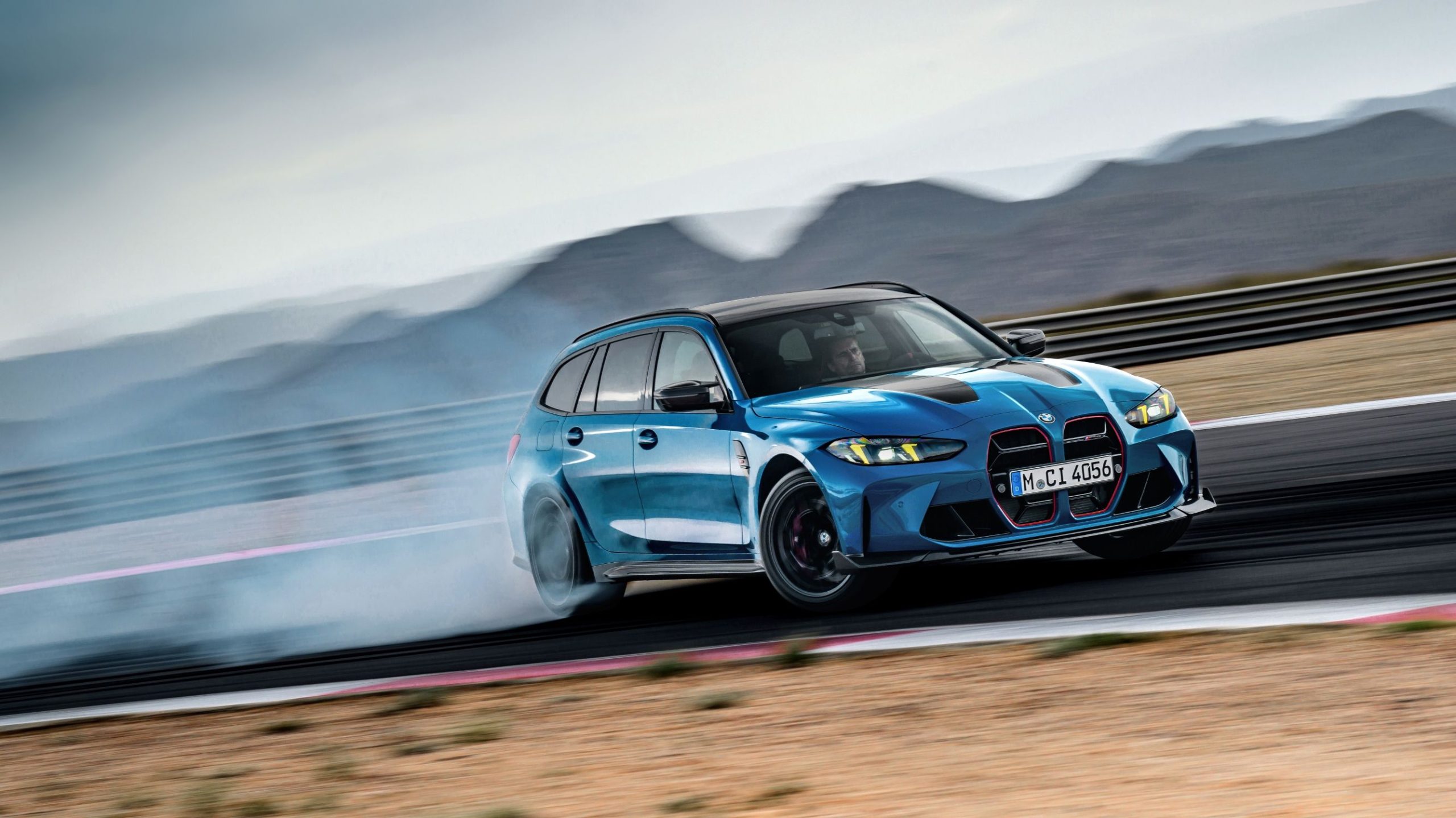
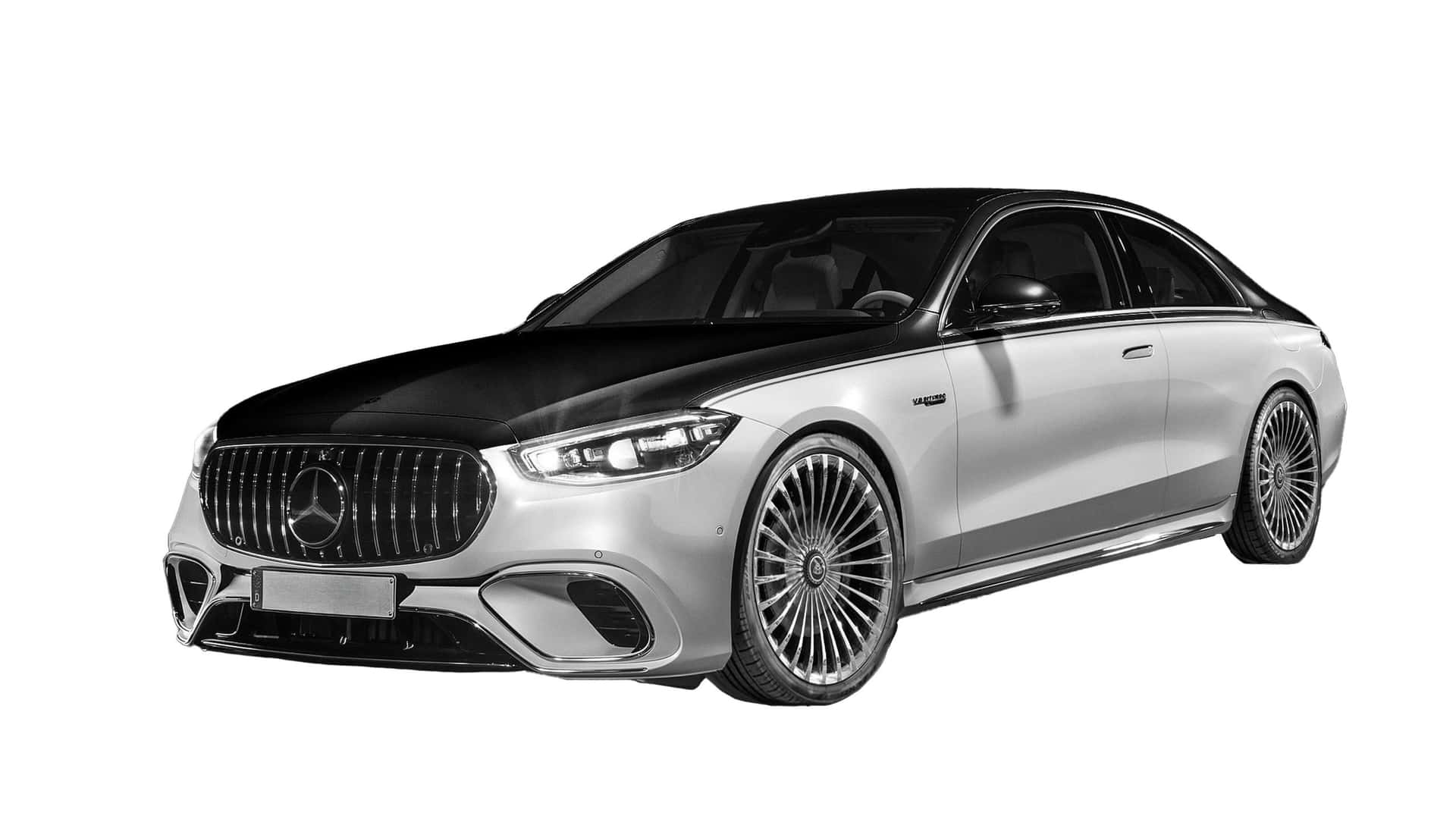


























Al SLs are heavy and poor handling. My old 230 was pretty to look at but in its day was considered to be a hairdresser’s car and therefore mostly driven by females.Whiteones in particular. I would still buy one again but NOT for £300,000.I sold mine for £1,800 in 1979
The Pagoda was never on my radar despite fancying most ‘sporty’ or ‘performance’ cars at some time or another as I’ve grown up. if I had to find a specific it would be the parts bin wheel trims – Ford got away with standard hub caps on RS Escorts and Lotus Cortina’s etc because they were incredibly understated cars
Heavy, yes but poor handling no. Put the right tyres on. Then you have the usual compromise with the dampers used, the car rolls on the standard dampers as shown but they provide for a comfortable ride over today’s pothole-strewn roads. If you prefer less roll but a bumpier ride then stiffer dampers will provide it.
My 280SL drives better than when new: thanks to programmable electronic ignition, synthetic oil, and a custom made stainless steel exhaust – essential to replace the one flattened tube Mercedes supplied in the standard exhaust to RHD cars to avoid fouling the steering gear. There is one more useful tip to UK owners who may well have NGK spark plugs by now. These are cold plugs and should be replaced by the original Bosch hot plugs.
We didn’t get to these sleak beauty’s in the 60s etc. I think it was either awareness ignorance or we just stuck within the very inner circle of British routes – Healeys, TR’s, Alpines, Jags, Elan’s – even the Imp !
In good hands the SL series R-113 Pagoda are very good handlers.The rally victories bear this statement in full.These cars have stood the test of time for good reason they are just timeless.
Ray, it is a W113, not a R-113. And to the author, it is only the 280SL that requires your first ingredient (thin sliver of a handle) because the 230SL and early 250SL had fixed hard top handles.
What a classy article! And who is that good looking chap? Goodbye all.